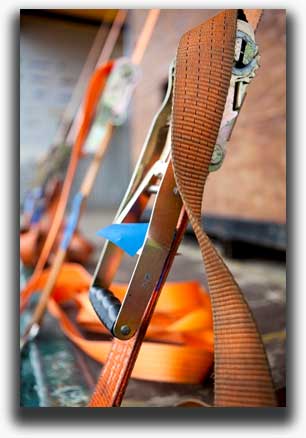Load (Cargo) Securing
Why should loads be secured?Apart from the human cost, think about the impact of failing to safely secure loads may have on your business. - Drivers, vehicle occupants, other road users, pedestrians and anyone who may be involved in loading and unloading the vehicle could be injured or killed
- Unsecured loads or objects may fall from vehicles and can cause road obstructions, traffic disruptions and collisions especially if drivers swerve to avoid fallen items
- Certain vehicle spillages may cause other vehicles to skid and lose control
- Unrestrained goods may crash into the vehicle cab during emergency braking
- Loads which have shifted, may have to be manually removed from the vehicle which may increase the risk of an injury or a fall from the vehicle
- Items falling out of vehicles at delivery sites causing injury and/or property damage
- Unstable loads collapsing during transit or unloading resulting in damage to goods
- Failure to secure a load properly can also result in financial losses from:
- Damaged goods, vehicles, property and roads
- Worker absence through injury
- Clean-up costs
- Damage to company reputation
- Increased insurance premiums
- Result in loss of control of the vehicle
- May cause the vehicle to overturn

No Excuse for Unsafe LoadsUnsafe loads cause accidents in the workplace and on the road. Every year loading, unloading and load shift accidents injure hundreds of people and cost businesses millions in damaged goods, damaged vehicles and lost work time.
Between 2006 and 2011 there were 509 accidents that involved loading, unloading and load securing operations reported to the Health & Safety Authority. These accidents involved workers or members of the public being struck by falling objects, workers falling from vehicles or slipping and tripping in loading areas. 12 of these accidents resulted in death. The remainder of accidents resulted in injuries that led to substantial absences from work. |
Further Information
Load Securing - Legislation
Load Securing - Guidance and Publications

